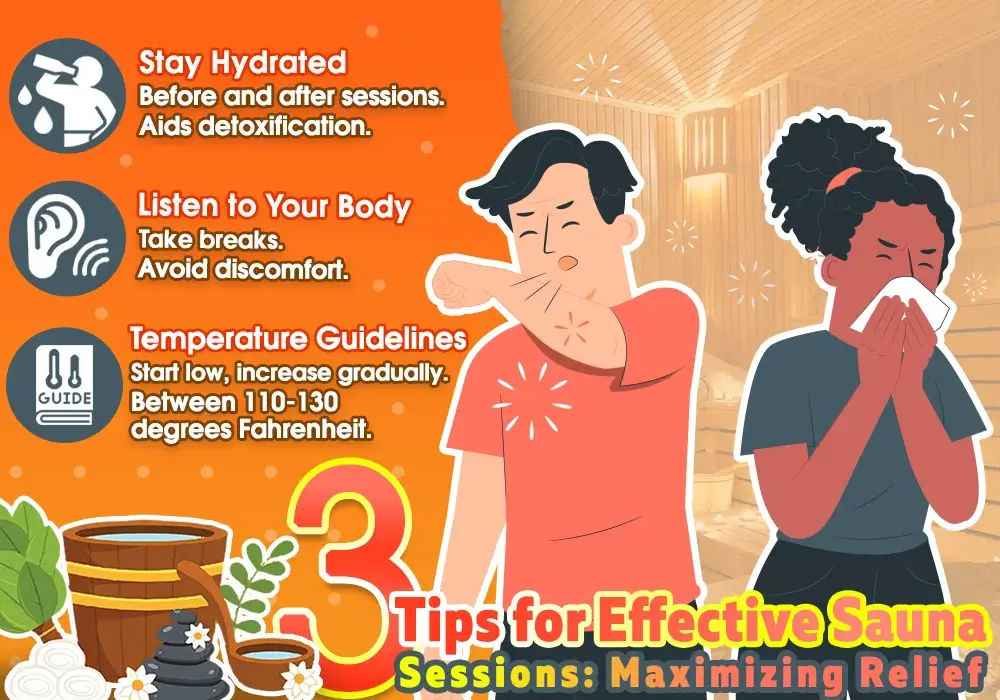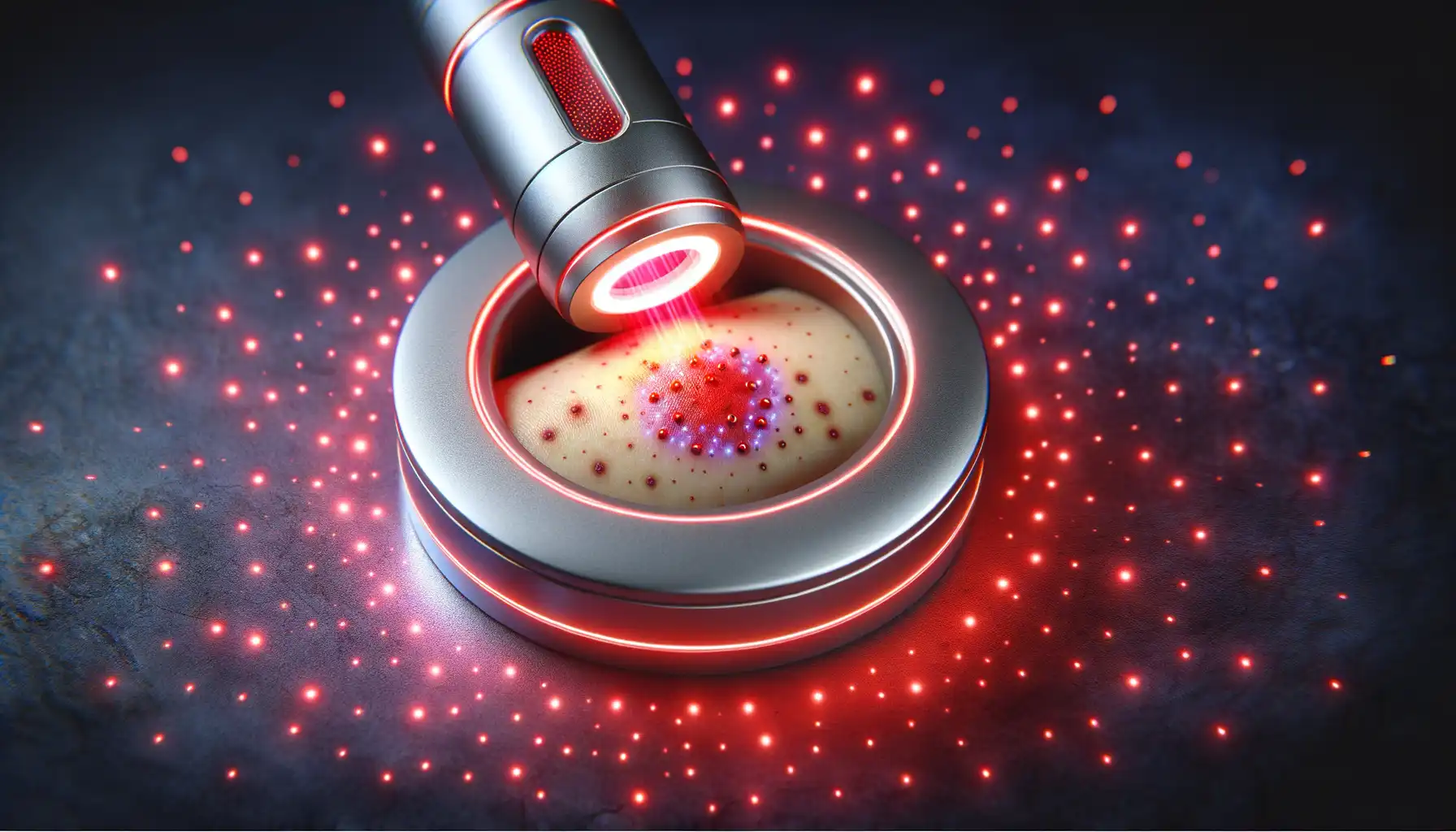Emerging research and countless personal stories suggest that regular sessions in an infrared sauna may help your body manage the pesky symptoms of seasonal and environmental allergies. By supporting your body's natural processes, it could be a game-changer in your wellness routine. Let's explore how this gentle heat can help you breathe a little easier.
Understanding the Allergic Response
Before we dive into how saunas can help, let’s quickly recap what’s happening in your body during an allergic reaction. When you encounter an allergen—be it pollen, dust mites, or pet dander—your immune system misidentifies it as a threat. It goes on the defense, releasing a cascade of chemicals, most notably histamine.
This histamine release is what causes all the trouble:
Inflammation in your nasal passages, leading to a stuffy or runny nose.
Irritation in your throat and eyes.
Sneezing, coughing, and general discomfort.
Essentially, allergy symptoms are the result of an overactive immune response and systemic inflammation. So, any strategy that helps calm this response and reduce inflammation could offer significant relief.
How Infrared Saunas May Ease Allergy Symptoms
Unlike traditional saunas that heat the air around you, infrared saunas use light to gently heat your body directly. This deep, penetrating warmth can trigger several physiological responses that may counteract allergy symptoms.
1. Promoting Healthy Circulation and Detoxification
One of the primary infrared sauna benefits is its effect on circulation. The gentle heat increases your heart rate and widens your blood vessels, similar to a light workout. This improved blood flow helps deliver more oxygen and nutrients to your tissues, including your congested sinuses and inflamed airways.
Better circulation also supports your body’s natural detoxification pathways. Sweating is a key way your body expels toxins. While allergens themselves aren't "sweated out," supporting your detox systems can reduce your body's overall load, potentially freeing up resources for your immune system to function more efficiently and less reactively.
2. Reducing Inflammation and Histamine
Chronic inflammation is a core component of allergies. Research, including a review published in the Journal of Environmental and Public Health, has shown that infrared radiation can help lower markers of systemic inflammation. By calming this inflammatory response, you may experience a reduction in the swelling and irritation that cause nasal congestion and sinus pressure.
While direct research on saunas and histamine is still developing, reducing overall inflammation can help create a less reactive internal environment, which may contribute to better histamine regulation.
3. Balancing the Autonomic Nervous System
Your nervous system has two main branches: the "fight-or-flight" sympathetic system and the "rest-and-digest" parasympathetic system. Many people, especially those with allergies, are stuck in a state of sympathetic overdrive. This chronic stress can worsen your immune response.
Infrared sauna sessions are deeply relaxing and have been shown to promote a shift toward the parasympathetic state. This calming effect can help dial down your body’s overactive response to allergens, making you feel less reactive and more resilient.
4. Improving Sleep Quality
It’s no secret that a stuffy nose and itchy throat can ruin a good night's sleep. Unfortunately, poor sleep can further compromise your immune function and worsen allergy symptoms—a frustrating cycle. The deep relaxation and core body temperature changes from a sauna session can significantly improve sleep quality. Better sleep leads to a more balanced immune response and helps your body recover.
A Practical Guide to Using an Infrared Sauna for Allergies
Ready to give it a try? Here’s how to incorporate infrared sauna therapy into your routine effectively and safely.
Session Length and Temperature
Temperature: Start with a lower temperature, around 110-125°F (43-52°C). You can gradually increase it to 140°F (60°C) as you get comfortable. It's about the infrared waves, not intense heat.
Duration: Begin with 15-20 minute sessions. You can slowly work your way up to 30-40 minutes as your body acclimates. Listen to your body—if you feel dizzy or unwell, end the session early.
Frequency
For allergy management, consistency is key. Aim for 3-4 sessions per week, especially leading up to and during your peak allergy season. On high-pollen days, a session in the evening can help clear congestion and promote restful sleep.
Hydration is Non-Negotiable
You will sweat, so it’s crucial to hydrate. Drink plenty of water before, during, and after your session. Adding a pinch of sea salt or an electrolyte powder to your water can help replenish minerals lost through sweat.
Timing Your Sessions
Post-Workout: A sauna session after exercise can deepen the benefits, helping with muscle recovery while improving circulation for allergy relief.
Evening Routine: Using the sauna an hour or two before bed can help you wind down, clear your sinuses, and set you up for a restorative night's sleep.
Post-Sauna Routine
After your session, take a moment to cool down naturally. Follow up with a lukewarm or cool shower to rinse off the sweat and close your pores. This is a great time to do a gentle saline nasal rinse to further clear your passages.
An At-Home Protocol for Allergy Relief
Hydrate: Drink a large glass of water with electrolytes 30 minutes before your session.
Set the Sauna: Preheat your sauna to your desired temperature (e.g., 120°F / 49°C).
Sauna Session: Relax for 20-30 minutes. Focus on deep breathing to help open your airways. Keep a towel and water with you.
Cool Down: Exit the sauna and sit quietly for 5-10 minutes, allowing your body to cool.
Rinse: Take a warm-to-cool shower.
Rehydrate: Drink another glass of water or a soothing herbal tea.
Sample Weekly Plan During Allergy Season
Monday: 30-min evening session to recover from the weekend and prepare for the week.
Wednesday: 25-min session after a workout to reduce inflammation.
Friday: 35-min relaxing evening session to clear sinuses before the weekend.
Sunday: 20-min morning session to start the day feeling clear and refreshed.
Managing Expectations and Staying Safe
infrared saunas can be a powerful tool, but they are not a cure for allergies. Think of them as a way to support your body and reduce the severity of your symptoms.
This approach tends to work best for:
Seasonal allergies (pollen, ragweed).
Environmental allergies (dust mites, pet dander).
Mild mold sensitivity.
When to Be Cautious
While generally safe, infrared saunas are not for everyone. It is crucial to consult a clinician before starting if you have any of the following conditions:
Cardiovascular issues (e.g., unstable angina, recent heart attack).
Low blood pressure.
Kidney disease.
Are pregnant.
Are taking certain medications, especially those that affect blood pressure or your ability to sweat.
The Centers for Disease Control and Prevention (CDC) also offers general guidance on heat exposure safety that is wise to review. Additionally, if you have an acute infection, fever, or are feeling unwell, it's best to skip the sauna until you feel better.
Your Partner in Breathing Easier
Navigating allergy season doesn't have to mean resigning yourself to months of misery. By integrating infrared sauna therapy into your wellness routine, you can support your body’s natural ability to manage inflammation, improve circulation, and reduce stress. This warm, relaxing practice may be the missing piece in your quest for relief.
Start slow, listen to your body, and track your symptoms. You may be pleasantly surprised at how much better you feel. As always, consider talking with your doctor or an integrative health practitioner to ensure it’s the right choice for you and to create a plan that fits your unique health needs.



